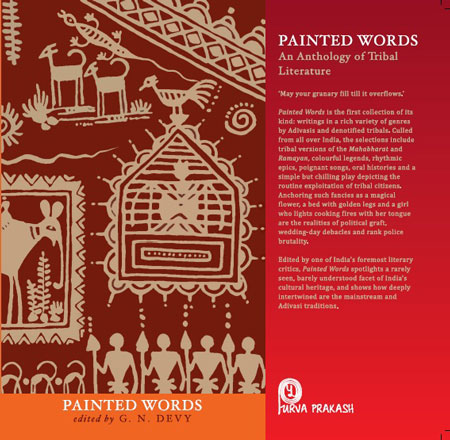Practising traditional utera methods has helped Dhadaw farmers keep away the harmful aspects of chemical farming
At the foothills of Datla mountain of Satpuda Valley in the Hoshangabad district of Madhya Pradesh is located the picturesque village of Dhadaw. Located on the banks of Dudhi River that also defines the boundary of the district, Dhadaw falls in the district’s forest belt. Within the periphery of this village lies a world that has efficiently maintained the essence of traditional agricultural practices — a remarkable feat at a time when farmers are increasingly quitting this occupation across the country.
Known as utera cropping, six to seven types of crops are sown simultaneously in this type of cultivation. For example, seeds of urad, jawar, paddy, tilli, tuar, sama and kodo are mixed and then sown collectively. Sown in June, the crop is harvested at different times; urad is harvested first, followed by paddy, jawar and tuar.
Sixty-year-old Ganpat, busy harvesting the crop with his hansiya (reaping hook), shares: “Almost nothing or very less money is required for utera farming. With the combination of our hard work, labour of the bullocks and some help from the monsoon, our crops get ready for harvesting. Every year, we save some seeds for the following season, saving the cost of buying seeds. The bullocks also give us fertilisers which, in turn, nourish our soil. […]
”Utera and mixed cropping are not the only methods of traditional farming that have the potential to liberate us from the shackles of chemical farming. There are several other methods of traditional farming, depending on the climatic and environment conditions of a particular region; satgajra (seven grains), navdanya (nine pulses), and barah anaja (twelve cereals) are various forms of agricultural practices. Each has its own benefits: they resist pest invasion, help increase natural fertilisation of the soil and provides food security.
According to Chandrabhan, an ardent advocate of utera farming, “Chemical farming is burning the soil. It is killing the micro-organisms which help make the soil more fertile. Our fellow farmers need to get rid of their dependency on chemicals. It is up to us to turn the tide.”
Source: Harvesting food security by Baba Mayaram (The Hindu, 31 March 2013)
Address : http://www.thehindu.com/sci-tech/agriculture/harvesting-food-security/article4566771.ece?homepage=true
Date Visited: Fri May 17 2013 19:50:47 GMT+0200 (CEST)
[Bold typeface added above for emphasis]
“It was assumed that tribal people have same health problems, similar needs and hence the uniform national pattern of rural health care would be applicable to them as well, albeit with some alteration in population: provider ratio. The different terrain and environment in which they live, different social systems, different culture and hence different health care needs were not addressed.” – Abhay Bang in Report of the Expert Committee on Tribal Health >>
Learn more
Atree.org | Ashoka Trust for Research in Ecology & the Environment (posts)
Biodiversity | Hyderabad biodiversity pledge | Nilgiri Biosphere
Climate change | Audio | The Climate Question (BBC Podcast)
eJournals & eBooks | Background guide for education
eLearning: Center for World Indigenous Studies
Forest Rights Act (FRA) | Hunter-gatherers | Legal rights over forest land
Health and nutrition | Recommendations by the Expert Committee
“The tribal food basket has always been diverse and nutritious”
United Nations on climate change
What is the Forest Rights Act about?
Who is a forest dweller under this law, and who gets rights?
Tips for using interactive maps
Toggle to normal view (from reader view) should the interactive map not be displayed by your tablet, smartphone or pc browser
For details and hyperlinks click on the rectangular button (left on the map’s header)
Scroll and click on one of the markers for information of special interest
Explore India’s tribal cultural heritage with the help of another interactive map >>
See also
Adverse inclusion | Casteism | Rural poverty
Demographic Status of Scheduled Tribe Population of India (Census figures 2011)
Fact checking | Figures, census and other statistics
Human Rights Commission (posts) | www.nhrc.nic.in (Government of India)
Search tips | Names of tribal communities, regions and states of India
“What is the Forest Rights Act about?” – Campaign for Survival and Dignity
“Who are Scheduled Tribes?” – Government of India (National Commission for Scheduled Tribes, NCST)

Tribal Literature by G.N. Devy >>
Free eBooks & Magazine: Adivasi literature and languages >>
“India, a union of states, is a Sovereign, Secular, Democratic Republic with a Parliamentary system of Government. The President is the constitutional head of Executive of the Union. In the states, the Governor, as the representative of the President, is the head of Executive. The system of government in states closely resembles that of the Union. There are 28 states and 8 Union territories in the country. Union Territories are administered by the President through an Administrator appointed by him/her. From the largest to the smallest, each State/UT of India has a unique demography, history and culture, dress, festivals, language etc. This section introduces you to the various States/UTs in the Country and urges you to explore their magnificent uniqueness…” – KnowIndia (Government), States and Union Territories (Visited: 2 September 2023)
Learn more about India’s 28 States and 8 Union Territories – From Andhra Pradesh to West Bengal | Nutrition >>